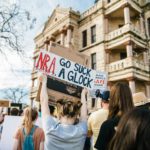 A new study from NYU Tandon School of Engineering suggests that political views, not racial identity, play the biggest role in shaping how people emotionally respond to mass shooting data. This finding challenges common beliefs about how people interpret information on gun violence.
A new study from NYU Tandon School of Engineering suggests that political views, not racial identity, play the biggest role in shaping how people emotionally respond to mass shooting data. This finding challenges common beliefs about how people interpret information on gun violence.
The study involved 450 participants who viewed bar charts showing mass shooting victims by racial group. Surprisingly, participants did not react more strongly when the data highlighted victims of their own race.
“We expected to see racial homophily, where people feel more connected to members of their own racial group,” the researchers said. “But it seems that the seriousness of mass shootings overrides these group-based preferences.”
Ideology matters
Instead, political ideology had the strongest influence on emotional reactions. Participants with more liberal views consistently showed stronger negative responses, no matter which racial group was highlighted. According to the researchers, this shows how pre-existing beliefs can shape emotional responses to even neutral, visual data.
“This research shows that people’s political views can color how they react emotionally to information, even when it’s presented in a neutral format,” the authors explained.
The study also found that even simple bar charts could provoke strong emotions, regardless of the viewer’s race or the racial group highlighted in the data. This could have important implications for how sensitive issues are visually presented in the media or in policy debates.
Accepted limitations
The researchers acknowledged limitations in their work, including a small sample size, which could make it harder to detect smaller effects. They called for more research to explore how different social issues and visual designs interact with people’s beliefs.
As discussions around gun violence and racial disparities continue, this study offers important insights into how Americans process such data. It suggests that overcoming ideological divides may be more important than focusing on racial differences when trying to reach a shared understanding of mass shooting data.